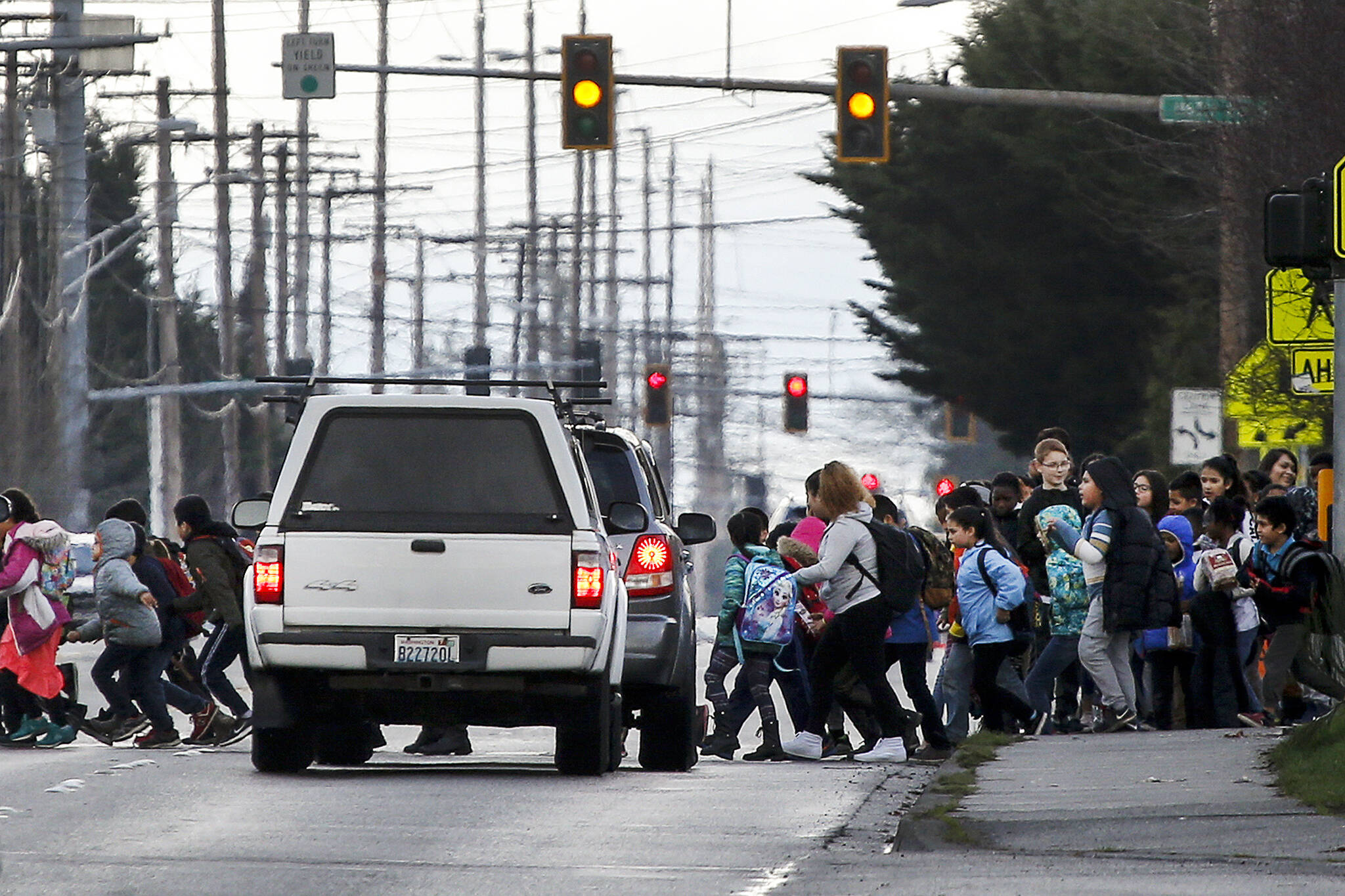EVERETT — On Wednesday, public works staff presented the draft version of a comprehensive traffic safety plan intended to end fatal crashes in the city of Everett.
The Vision Zero Everett initiative hopes to eliminate fatal and serious injury crashes on Everett roads by 2050. To do so, city staff is adopting a “safe systems approach,” which focuses on safer road design, lower speed limits, safer road infrastructure and improved post-crash care.
Between 2019 and 2024, 62 people were killed in vehicle crashes in Everett. About half of the people killed by crashes were pedestrians or cyclists, the draft plan reads.
A big focus of the plan is improving pedestrian safety, city traffic engineer Corey Hert said Wednesday. Through the plan, the city hopes to adopt a pedestrian hierarchy, which prioritizes pedestrian safety when designing streets and urban spaces, he said.
The city also hopes to engage in safety education campaigns with community members and work with police to improve enforcement efforts.
The draft plan identifies a network of roads across Everett that are priorities for safety improvements. They largely include arterial streets like Broadway, Evergreen Way and Everett Mall Way.
One way the city plans to implement safety improvements is through infrastructure changes, like new painted crosswalks, raised medians or leading pedestrian intervals, a practice that allows pedestrians to get a head start crossing streets at signalized intersections before cars get a green light.
Everett also hopes to implement proactive safety measures across its road network through data analysis of where crashes may be most likely, ideally preventing crashes before they occur, said Brent Crowther. Crowther is a consultant with Kimley Horn, a firm that helped prepare the Vision Zero plan.
“Examples include added lighting, improving signage, reducing speeds and enhancing pedestrian crossings in areas with similar risk profiles,” Crowther said. “This approach helps us prevent crashes more equitably, more proactively and more efficiently.”
Specific upgrades that could be implemented along the high-risk roadways are included in technical memorandums which have not yet been published as of Thursday.
The work laid out in the plan is expected to take years to fully implement due to the city’s funding constraints.
“I think we need to be honest with our constituents that this is a plan, and it’s a long-range plan,” Hert said. “Like any long-range plan, it’s going to take time.”
The city’s release of the draft plan on Thursday started a four-week public comment period. The final report is expected to be complete in November.
City public works staff will lead the implementation of the Vision Zero plan once it’s complete. The city will assess progress through annual reports and continue to update the plan through revised data analysis and introducing new proposed strategies to curb traffic issues.
Everett is one of a number of cities across the country adopting similar plans. In 2000, Washington became one of the first states to establish a goal of zero traffic deaths with its Target Zero program.
Everett’s plan only focuses on its city streets, not state or federal highways like I-5.
City staff have been gathering feedback from residents for the Vision Zero plan since January. It was primarily funded by a grant from the Puget Sound Regional Center under the federal Safe Streets for All initiative.
Residents can provide feedback on the plan online until Oct. 10: tinyurl.com/2u5v4ypj.
Will Geschke: 425-339-3443; william.geschke@heraldnet.com; X: @willgeschke.
Talk to us
> Give us your news tips.
> Send us a letter to the editor.
> More Herald contact information.

























